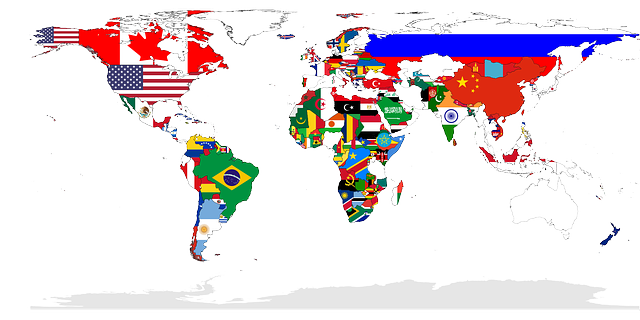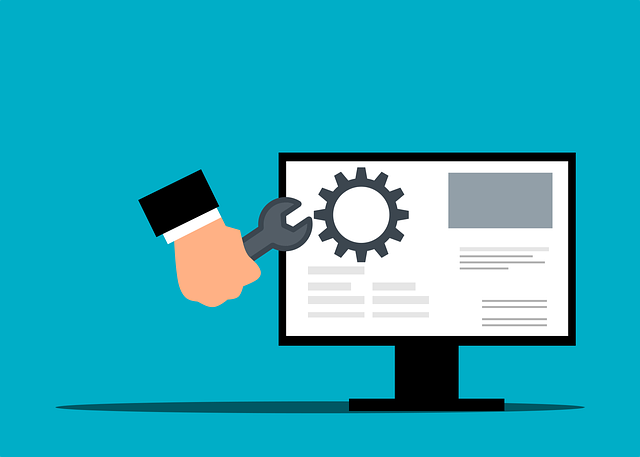What to Do if Your Domain Name is Taken? (15 Domain Hacks)
Not getting the domain name you want can be so frustrating! So what to do if your domain is take? Let BrandSnag help you with these 15 Domain Hacks.
Whether you’re just starting a business or you’ve established a large brand, your digital presence is directly connected to your name. Consistency is essential in all marketing efforts, especially when it comes to building your following. Consider the last business you researched. Did the company have a website? Social media accounts? Email marketing? Most consumers will consider a business name as a natural link to a domain, a critical component to growth.
Unfortunately, registering a domain isn’t always straightforward. According to Business Wire, 366.8 million domain name registrations happen per quarter. That’s over 83 million domain registrations per month. When establishing your company’s digital footprint, choosing a domain name is crucial. Maybe you’ve spent hours deciding the perfect name for your company, or perhaps you’ve made the impulsive decision to rebrand your business. When you try to register your domain, it’s already taken. What should you do? Choosing the wrong domain name can negatively impact search engine optimization (SEO). Search engines consider domain names when indexing your website—keywords within the domain will pull results for users. But stuffing keywords into your domain isn’t a good choice either. So, what can you do if the domain you’ve chosen is already taken? Before committing to a domain, consider the following 15 steps below:
Purchase the Domain Name

While the domain you’re interested in purchasing is already taken, it doesn’t necessarily mean that it’s gone forever. Visit the domain in question and see what comes up in the browser. If the domain takes you to a company website, there’s a meager chance of purchasing it from the current owner. Alternatively, a domain may be forwarding visitors to another domain (a common practice called “masking”). If the website is pointing to another domain, there’s a low chance of acquiring the domain.
If the domain is parked, you may be able to secure the requested website. A parked domain is something that has been purchased but isn’t directly connected to a company website. Most hosting companies and registrars will offer parking services for anyone wanting to resell a domain for profit. Users connect to an “under construction” web page that displays advertisements, especially if the owner hasn’t attached a website to the domain.
To purchase a domain, you’ll have to visit a domain registrar. This page will give you the name of the website owner, contact information, and any technical details about the domain. Reach out to the current owner with a simple email. State the domain is one of several you’re interested in purchasing, without mentioning a price for the domain. Pricing can be significantly different, so it’s essential to have a general idea of the purchase price you’re willing to spend. Domains vary in price depending on popularity, keywords, and demand, ranging from minimal markup to thousands of dollars.
Get a Local Domain with a ccTLD

When it comes to domain registrations, the .com extension is considered the global standard. It’s recognized worldwide and is exceptionally popular in the United States. When it comes to domains, any top-level domain is equally powerful when it comes to trust. A ccTLD is a domain extension attached to a specific country and is safe. These codes are called country code top-level domain (ccTLD), and in some situations, they are more popular than .com extensions. For example, .de is more popular than .com in Germany. All ccTLD identifiers are two-letter codes attached to the specific country of origin. Most domain registrations require country-specific extensions to be registered by a citizen within the country.
That’s not to say that ccTLDs are without issues. Some extensions are known for spam sites, including the .cc, .cn, and .ru endings. It’s always better to purchase the .com domain before registering a ccTLD domain name, especially for website recall. Most people will revert to the .com extension out of habit. Likewise, imitating companies can purchase alternative endings of your company’s brand and siphon customers from you by building a similar website. As some websites are typically known for spam websites, it’s important to recognize the affiliation your business site may have when using a ccTLD. If your preferred domain is taken under the .com extension but is available under the country ccTLD, building your brand with the country suffix is always a viable option.
Add your Country or City

Consider adding a specific country or location to your brand’s URL if your preferred domain is taken. This strategy is ideal for companies within the service industry with particular service areas, which can lock in your company’s domain and serve as a location-specific URL. This approach to domain registration can also serve as a connection to a company’s beginning. Let’s say your company ships products globally but originally started as a small company in Texas; attaching the state to your URL can have a positive affiliation.
It’s important to remember that some visitors may connect the location in your URL with a service area. They may attribute the location to only working within that area, limiting a brand that hopes to expand in the future. As such, it’s vital to carefully consider the implications of this before adding a city, state, or country addition to your domain.
Add an Extension of Your Brand or Service

If you’re looking to stick with the original name, getting creative may be an easy option to keep your brand. For example, famous car company Tesla could not secure the domain Tesla.com (initially registered in 1992) until 2016. While the company eventually purchased the domain, the primary domain still shows as TeslaMotors.com. Consider adding an extension of your brand or service to include a few critical descriptors about the company. These descriptors might consist of the industry or other terminology common within the field (for example, WindowsandDoorsInstallation.com).
Get Creative

As the development of online domain registrations continues to soar, so too does the development of new extensions and TLDs. These TLDs continue to gain popularity, with a strong focus on integrating endings into the domain name themselves. Some examples might include a television streaming company using a .TV top-level domain, or a celebrity gossip domain using a .BUZZ ending.
It’s important to note that the domain suffix doesn’t influence search engine optimization (they are all recognized as top-level domains), but having a modern domain can affect the level of trust with older generations. Late millennials and baby boomers have instinctively grown to trust the .com suffix in a domain; trying to incorporate a new ending may be met with apprehension. Carefully consider the target audience before choosing a new ending for your domain. If your audience is primarily in the mid-thirties or higher, it may be wise to opt for another variation of the .com. Alternatively, if you’ve assessed the target audience to be under thirty, a new domain ending may work nicely for your domain name.
Add a Verb to your Domain

Although the original domain name may be unavailable, getting your brand name is still possible with the addition of verbs. This method allows companies to retain the original URL without having to reconfigure the .com ending. This prevents having to source out ccTLDs, or other TLD options. Consider different verbs that provide action to the user. These might include verbs like “try,” “use,” “rent,” or “receive,” sticking with relevance to your business or industry. Not only are these versions of domains easier to recall, but they can also encourage visitors to act.
Domain Hacking

Although domain hacking might sound sinister, it’s a fun play on words for company website registration. This process involves combining two words to make a word or phrase collectively. This brings new domain endings to the front and center while still creating a memorable domain. Some examples of domain hacking would be Bit.ly, Amuse.Me, or Inter.net. This creative method of domain registration still brings the company brand to viewers while remaining original. With 1,514 different top-level domains currently assigned with ICANN, domain hacking is now easier than ever.
Abbreviate Your Brand Name

This method of selecting a domain name shortens longer business names down to one focus word with post-nominal letters. This option may not suit every industry but abbreviating a brand name may keep your target audience interested while still having a top-level domain. If you’re considering this option, look at the full domain name you’d like to register. If your company is called “Joan’s Hardware Store,” consider JoansHS.com or JoanHS.com as potential domain options.
Ensure that you check all abbreviations for potential problematic meanings; no one wants to shop from Debbie’s Beauty Office (DebbiesBO.com). This option isn’t ideal but will bring a .com domain registration for those wishing to stay with the most popular suffix.
Add a Catchphrase

If your business name isn’t memorable, your catchphrase or slogan might do the trick. Most taglines are short and unique, which makes them perfect for URLs. Use slogans or taglines in conjunction with alternative TLDs or with the .com suffix. Not only do you have total creative freedom when it comes to building the catchphrase, but you’ll allow your brand to stand out against the competition. If you’re considering this approach to your company URL, consult a creative writer or SEO company to incorporate keywords into the domain.
Domain Hacking Using a ccTLD

Like traditional domain hacking, using a ccTLD involves a play on two words (or, in this instance, using the ccTLD as the end of your company name). It’s important to remember that some country-based domain suffixes require citizenship in order to register the domain (for example, .ca for Canadian websites requires a Canadian address to register). If a company wanted to use ccTLD as a domain hack, they would include the suffix as part of the company name. If Prius wanted to register as a ccTLD, they could create Pri.Us as the domain registration. Likewise, a marketing company named “Shade” could register as Sha.de in Germany.
Keep a Watch on the Domain You Want

Maybe you’re committed to a specific domain or want to keep an eye out for your brand’s URL. Whatever your reason, capturing the ideal domain may come down to time. This method works well for individuals who have tried to purchase a domain and don’t have the money to do so. Keeping an eye on the domain status can be facilitated with DomainTools to track any changes in the status online. These tools will notify registered users of expiring domains, highlight expired domains, and provide alternative TLDs to given options.
This method of choosing a domain can take users several months (if not years), depending on whether the domain is being used or parked. For active domains, meaning websites currently being operated by another company, the probability of the domain expiring is minimal. For those URLs sitting parked, other buyers may be interested in purchasing the domain. It’s also important to remember that several .com TLDs will increase in value over time instead of decreasing. This can be a costly venture for businesses and a risky play long-term if you’re committed to a specific domain.
Add a Hyphen to Your Domain Name

The hyphen has long been discussed and analyzed by marketing professionals about its use within a domain. Some agree that they make domains readable, the only special character (or space option) allowed in domain registration. They also provide options for businesses wanting to keep the formal name when their preferred domain is taken. Unfortunately, it can bring negative associations with use. For example, studies have found the hyphen to indicate less credibility and trust with viewers than the solid URL comparison.
Missing a hyphen in the name can result in a different company page showing in the results while making it difficult for the average user to remember. That’s not to say that your website is doomed with a hyphen, as several popular companies remain successful with a hyphenated URL. For example, Penny-Arcade.com, Merriam-Webster.com, and Harley-Davidson.com are all websites with hyphens in their name, yet they have achieved long-standing success.
Know Your Audience

A good domain will only do well if the right audience finds it. Knowing your target audience is a critical component of your domain search, whether you opt for a unique TLD or you’re looking to expand your company’s reach with a new catchphrase. Always start by analyzing your current customer base (if you’re an established business) or the projected audience (if you’re just starting your company). Focus on all aspects of customers, from the age, location, income, and gender to the average order size. This information is vital for choosing the platform you’re going to run.
Always consider brand consistency when planning your URL. Opt for a creative domain name with TLD, ccTLD, or domain hacking for those with a younger target audience. If the target audience is more traditional, stick with a .com TLD without hyphens. Although the approach will vary slightly through different platforms, you’ll want to maintain consistency across various digital platforms.
The company’s approach to website, social media platforms, and online content (whether guest blogging or partnership) should all be carefully considered. Stick with the social media platforms targeting the company’s preferred demographic. It’s always a wise idea to check for social media handle availability before committing to a domain. After all, consistency is king when it comes to retaining followers. If you’re looking to promote your company on social media, the ideal platform depends on your industry and audience.
Companies involved in visual media should prioritize Instagram and Pinterest. Services do well with Facebook, Twitter, and Google Places. TikTok is a popular network for self-care, mental health, recipes, and other actionable steps (for example, a makeup artist sharing tips or tricks). Keep the branding consistent across all platforms, so there is no confusion between your company’s profiles.
Legal Action

This action is only relevant in situations of domain squatting, copyright issues, or trademark infringement. Should a business be offering goods or services similar to yours, it could be considered trademark infringement (especially if you’re an established brand). Contacting a lawyer is always a good idea in these situations, especially if the company is imitating your brand. Domain squatting is another issue when it comes to domain registration. Individuals will purchase commonly sought-after domain names in hopes of reselling them at a higher value. While this practice is illegal, it’s expensive to resolve, mainly because you need to prove trademark infringement. Business owners also need to remember that purchasing domains with potential future value are legal (this practice is called domain speculation).
If you’d like to retrieve the domain, you’ll need to justify your action in court. This method can be costly, time-consuming, and difficult to prove (primarily if the domain owner hasn’t used the domain). As the business owner, choosing a different option from the list is almost always easier.
Take a Break and Brainstorm New Domain Names

When the specific domain name isn’t available, branching out into other options may be more accessible. Established websites carry a level of weight with them, especially if they’re in a competing industry. They have a level of traffic connected to the domain that is difficult to compete with when you’re first starting. One method would be brainstorming different business names outside of the original domain. This doesn’t mean you won’t have a targeted site when you’re finished; it’s simply refocusing your brand.
Consider keywords related to your industry rather than confusing visitors or potential clients with a hyphen or abbreviated URL. You can include service areas, products, location, or a new formulation of the domain you already have. For instance, a company with the company “David Car Rental” may find the domain taken. Alternatively, the URL could switch to “CarRentalsByDavid.com” or “DavidsWheels.com.”
Rushing the domain purchase can have long-lasting marketing implications down the road. Slow down, consider all options, and evaluate the availability across all digital platforms before purchasing a domain name. If you find a name that works with your company, has availability on social media platforms and attracts your target audience, you’re on the right path.
Domain Name FAQ’s
What is a Domain Name?
A domain name is a string of characters or text used to access a website. Visitors enter the domain name into the search or address bar in a web browser to connect with the attached numeric IP address.
How Much Does a Domain Name Cost?
Purchasing a domain name is typically between $10 and $20 per year, depending on where you buy. If buying a parked website, the cost can increase significantly to hundreds (or thousands of dollars) to buy the domain, plus yearly renewals.
Can I Buy a Permanent Domain Name?
No. You cannot buy a domain name permanently, as it’s performed on an annual basis. You can pre-pay the domain cost for a 10-year period, which ensures the domain won’t expire during this time.
What is a ccTLD Domain?
A ccTLD is a top-level domain extension that is specific to a country. Every country has its domain extension assigned, although some are more popular than others (for example, .US isn’t a popular option in the United States).
What are the Types of Domains?
There are six different types of domains currently available. These domains include premium domain, third-level domain, second-level domain (SLD), generic top-level domain (gTLD), country code top-level domain (ccTLD), and top-level domains (TLDs).
What are the Most Common Domain Extensions?
Currently, the most common domain extension is the .com extension. Nearly 52% of all websites use this extension. Other popular options include: country codes, .org (organization), .net (network), .co, and .us.
How Long Should a Domain Name Be?
Ideally, a domain should be between six and fourteen characters long. The shorter the domain name, the better it typically performs. The majority of short domain names have been purchased and sold for thousands of dollars.
Can I Add Special Characters to My Domain Name?
All domains may contain letters, numbers, and the hyphen. Special characters are not permitted in the domain nor spaces throughout the domain name. It’s also important to note that domains may not begin nor end with a hyphen.
What are the Top 5 Domain Names?
According to Alexa.com, the top five domain names include Google.com, Youtube.com, Tmall.com, Facebook.com, and Qq.com.
Is .com or .co Domain Name Better?
While both domain names are high performing for search engine optimization, it’s always better to use the .com address when available. The majority of people will assume a domain is .com unless the suffix is included in the advertising.
Should you Trademark your Domain name?
Registering your domain name for a trademark is acceptable if it doesn’t infringe on anyone’s rights. Trademarking the domain can deter squatters from registering and attempting to resell it at an inflated price.